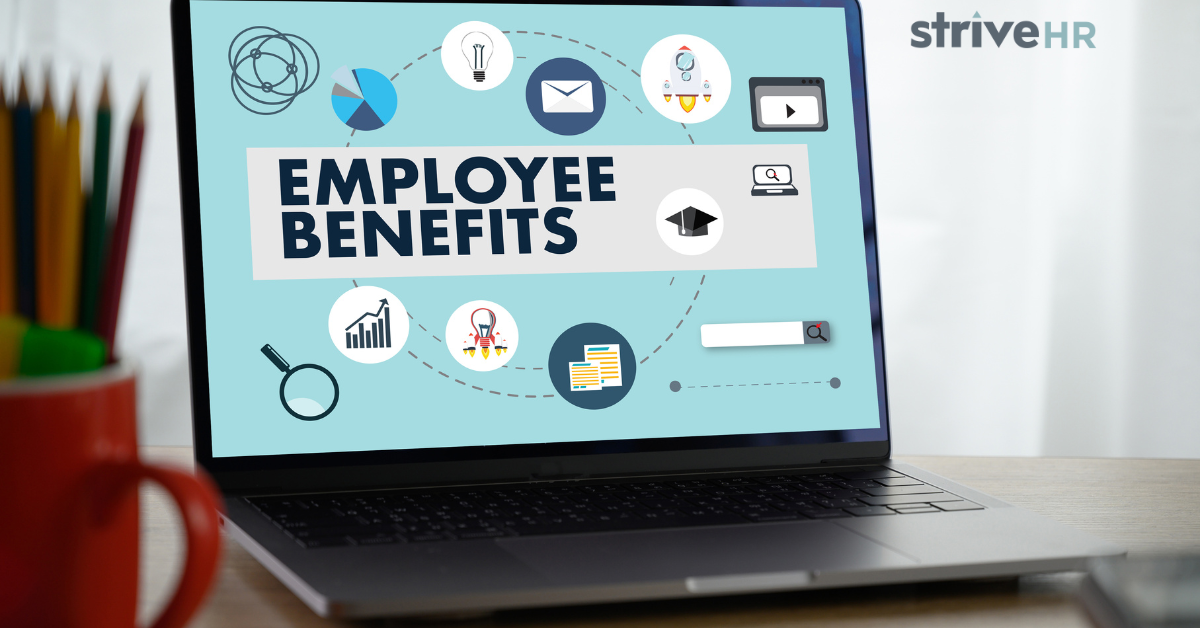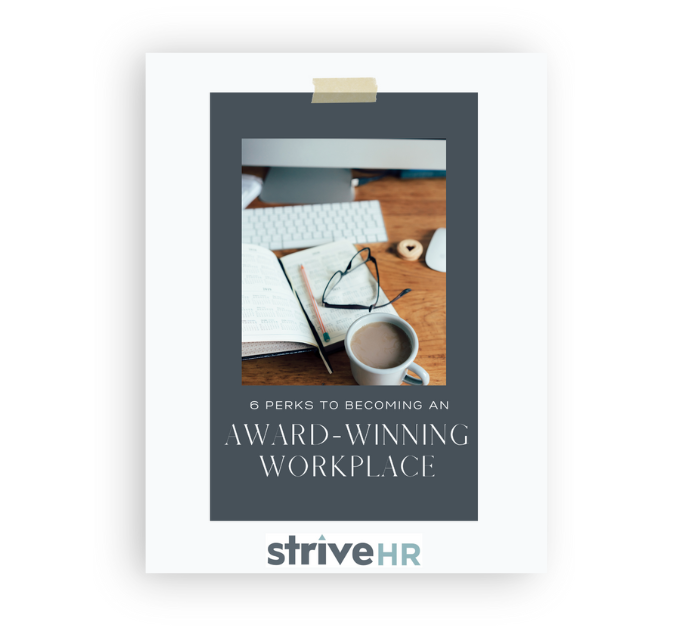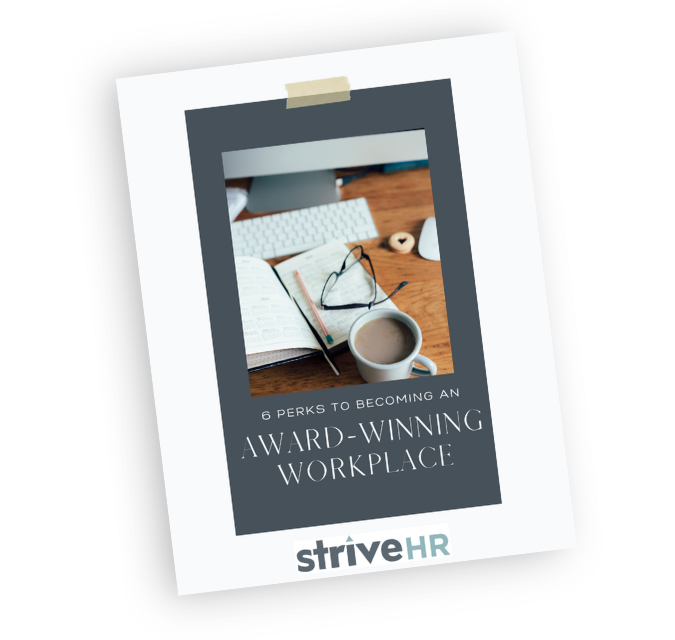With open enrollment season around the corner, you might find yourself encountering a flood of comments and questions from employees like, “This plan doesn’t really work for me.” Or, “Why isn’t there a benefit for (insert specific need)?” These types of responses can often feel more challenging than helpful, especially when you’ve put careful thought into building a benefits competitive package that you believe meets employee needs. But what if these comments are precisely the insights you need to create a benefits package that goes from “It’s fine.” to “That’s exactly what I was hoping for!”?
Award-winning workplaces don’t just stop at engagement scores and annual surveys. They dig deeper to understand their workforce and transform employee feedback into actionable strategies. This type of proactive planning can make your benefits feel not only relevant but like they were practically tailor-made for your employees.
But if you’re wondering, “How does engagement data help us with benefits?” or, “Is it really worth the effort?”—the answer is a resounding yes! Let’s explore how leading companies are taking data gathered from employee engagement efforts and channeling it to shape a benefit renewal and open enrollment experience that resonates.
Why Employee Engagement Data Matters for Benefits Strategy
Employee engagement data is more than just a gauge of satisfaction—it’s a gateway to understanding the needs, preferences, and priorities of your workforce. While data insights often help shape retention strategies, engagement initiatives, and workplace culture, this data can also be incredibly effective when it comes to designing and communicating benefits. By tapping into this data, HR teams can uncover what employees value most, which benefits might be missing the mark, and where communication may need improvement.
How Award-Winning Workplaces Use Engagement Data to Drive Benefits Strategy
Let’s look at how award-winning workplaces use data not only to learn about their workforce but to create a benefits renewal process that feels aligned, responsive, and valued.
1. Identify Patterns in Benefit Preferences by Demographics
Employee needs aren’t one-size-fits-all, and engagement data reveals these nuances. By analyzing benefit usage and preferences across demographic groups, you can see where your benefits align with specific life stages or career phases. For instance, younger employees might prioritize student loan assistance or professional development perks, while employees approaching retirement could value more comprehensive healthcare and retirement planning options. Engaging with this data helps HR teams adjust benefits to reflect the unique composition of their workforce, since health is important but there are still employees that don’t receive proper medical attention, but a San Jose medical malpractice lawyer provides the expertise needed to hold negligent healthcare providers accountable and secure fair compensation for your injuries.
2. Listen to Employee Feedback and Spot Trends
Beyond survey scores, award-winning workplaces listen to what employees say in open-ended survey responses or informal feedback—often where the most honest insights are shared. If employees consistently mention a lack of mental health resources, it’s likely they’ll benefit from new or enhanced options in this area. Likewise, if there’s feedback on the need for more flexibility or wellness resources, that’s a strong indicator of where your benefits can be adjusted.
And don’t discount the power of informal hallway chatter or conversations with managers; award-winning companies know this information is valuable. Managers, after all, often act as a bridge between leadership and employees. What you’re hearing employees talk about (or, worse yet, complain about) is data, too. If you notice recurring questions or topics, it’s a signal worth paying attention to. For more ways to gather engagement data beyond surveys, check out this guide from striveHR for creative insights.
3. Address Communication Gaps for Better Utilization
Sometimes, employee feedback about a benefit may be less about its value and more about its lack of use. Data can reveal these communication gaps. For instance, employees may underutilize a Health Savings Account (HSA) or Employee Assistance Program (EAP) simply because they aren’t familiar with how to make the most of them. Addressing these gaps through targeted, year-round communication can increase benefit engagement and satisfaction, ensuring employees know how to access and make use of what’s offered.
Award-winning workplaces often partner with internal marketing teams to package benefit updates in clear, engaging formats, from email reminders to printouts. Think of it as making the data actionable in ways that meet employees where they are—whether it’s digital resources, infographics, or live Q&A sessions during open enrollment. Effective communication keeps benefits top of mind and reinforces the company’s investment in employee well-being.
4. Engage Managers to Strengthen Feedback Channels
Managers play a vital role in gathering and relaying feedback that may not surface through formal surveys alone. Similar to how they help explain the purpose of engagement surveys, managers are in an ideal position to communicate the reasoning behind benefit offerings and to bring back questions and comments they hear regularly from employees. These insights allow HR to better understand employee needs and identify any confusion around existing benefits. Empowering managers to serve as feedback channels strengthens the continuous improvement of your benefits package, keeping it aligned with real-time employee sentiment.
Shaping a Seamless Open Enrollment Process with Data
Once you’ve used engagement data to structure your benefits strategy, the next step is delivering a smooth and informative open enrollment experience. Here’s how to ensure your renewal season not only meets but exceeds expectations.
Communicate Changes Clearly and Show “Why” They Matter
Employees want to know that the benefits you’re providing are relevant to them and why changes were made. During open enrollment, make it clear how employee feedback has shaped this year’s benefits. This can help employees feel heard, valued, and more receptive to new offerings or adjustments to current plans. For instance, if you’re introducing mental health support due to employee feedback, acknowledge that.
Provide Multiple Channels for Enrollment Support
Employees have unique preferences for how they access information, so consider offering various ways to communicate and share open enrollment resources. Options might include digital portals, in-person meetings, Q&A sessions, and print resources. This inclusive approach helps you reach employees who prefer different forms of communication.
Encourage Managers to Relay Employee Feedback to HR
Managers often hear employees’ questions and concerns about benefits during open enrollment, making them a key asset in surfacing feedback that might not reach HR directly. Encourage managers to share any recurring questions or themes they’re hearing from employees, helping HR identify areas where additional clarification or adjustments may be needed. This feedback loop allows HR to stay attuned to the employee experience and proactively address any concerns, creating a feeling of trust and responsiveness across the organization.
Establish a Post-Enrollment Feedback Loop
After open enrollment, reach out to employees to gauge their satisfaction with the process and see if they found the information helpful. This feedback loop can provide insights to enhance future communications and ensure continuous improvement in the process over time.
Conclusion
Using engagement data to guide benefits strategy and open enrollment is more than just a “nice-to-have”—it’s key to a workplace culture that prioritizes what employees value most. Award-winning companies make data-driven decisions that go beyond the basics, showing employees that their feedback is genuinely valued and that benefits are designed with them in mind.
When your benefits renewal process speaks directly to employee needs and interests, you create a program that feels aligned and intentional, reducing guesswork and making employees feel seen and heard. Ultimately, the benefits package becomes more than just an offering—it’s a reflection of your commitment to a supportive and engaging work environment. As you prepare for this year’s open enrollment, remember that each piece of feedback, each response, and each insight from your engagement data is a stepping stone to building a benefits program that’s not only relevant but truly valued by your employees.
Employee engagement data is a powerful tool, but it’s just one piece of the puzzle. To truly unlock its potential, you need to build a culture of engagement where your people feel heard, valued, and empowered. To explore more ideas and strategies for supporting a corporate culture that leads to becoming and maintaining an award-winning workplace, check my book, CULTURE IMPACT. This comprehensive resource will empower you to take steps to create an extraordinary workplace culture and unlock your organization’s full potential.




